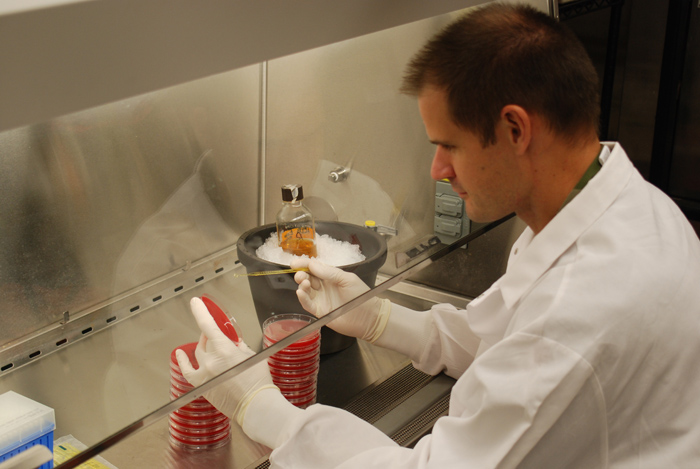Engineers, Scientists Participate in International Exchange Program

Much like a foreign exchange program in which a student may participate, the U.S. Army Medical Research and Materiel Command coordinates employees who want to participate in a professional exchange through the Engineer and Scientist Exchange Program.
As a professional development program, the ESEP promotes international cooperation in military research, development, test and evaluation through the exchange of military and government civilian engineers and scientists.
Through the ESEP, foreign personnel complete on-site assignments in U.S. government establishments, such as Fort Detrick, and U.S. personnel have the opportunity to work in foreign government establishments.
The ESEP exchanges are mutually beneficial to both participating countries. The ESEP participants typically maintain assignments for one to two years, but they may extend depending on the nature of the project and available funding.
Currently, the USAMRMC maintains relationships with several countries through the ESEP, to include the United Kingdom, France, Israel, Germany, the Republic of Korea and the Netherlands. Each relationship involves either foreign personnel working at Fort Detrick or U.S. personnel working abroad.
The USAMRMC has participated in the program since the mid-1990s, sending and/or receiving professionals every year.
"It's a great opportunity because you're able to learn and develop new capabilities and build a foundation for a stronger relationship with another country," said International Affairs Officer Julie Geare, who serves as the international point of contact for the U.S. Army Medical Command and the USAMRMC with respect to international programs.
According to Geare, the USAMRMC maintains a strong relationship with France. Biodefense Research Scientist Capt. Kyle Lund currently serves as a U.S. participant in France, and French microbiologist Lt. Col. Fabrice Biot has just begun his two-year assignment with the USAMRMC.
"There has been a strong bi-lateral exchange with France in recent years, which is important in advancing collaborative research," said Geare.
Lund's intent of participating in the ESEP includes learning how another country performs research and bringing back any new techniques that could assist those working in U.S. government labs. He works on a joint project to identify and develop better therapeutics for burn patients.
Although science's universal language is English, Lund still feels it necessary to know French to successfully complete his assignment and accomplish his goals in France.
"The greatest challenge is the language barrier. The language of science is English, but speaking the language of the country that you are in is very helpful in breaking barriers," said Lund.
Despite the challenges, Lund has acclimated well and has already contributed to the development of a multi-institute research project that will continue after he leaves.
"The experience has been very productive and I have enjoyed being able to work with the French military. They have been very good to me, and I have been able to build a relationship that will last a lifetime," said Lund.
On the other side of the exchange, Biot's assignment at the U.S. Army Medical Research Institute of Infectious Diseases includes continuing to work toward his goal of understanding the mechanisms by which bacteria become resistant to antibiotics, focusing on a different pathogenic bacterium than what he worked with in France.
Although this is Biot's first time participating in the ESEP, he has had several foreign deployments throughout his career, one of which involved crisis operations response as a pharmacologist for the Ivory Coast's oil spill. Another deployment included Bosnia, where he supported the North Atlantic Treaty Organization's intervention.
Biot's extensive experience with foreign deployments has taught him the importance of completing research and spending time in the lab.
"When you're in the military, you like to be sent to other countries for crisis operations, but if you don't do work in labs, you can't be sent as an expert to another country," said Biot.
The experience Biot is gaining working with a different type of bacteria at the USAMRIID will greatly contribute to his portfolio and toolkit and better prepare him for future deployments.
Currently, seven foreign engineers and scientists work at the USAMRMC through the ESEP and one U.S. scientist works abroad. Due to more backfill and funding requirements recently, fewer U.S. personnel have been able to participate in the program than are interested. Geare is hopeful that, due to the great advances in research that result from these exchanges, the program will once again gain momentum among U.S. participants.














